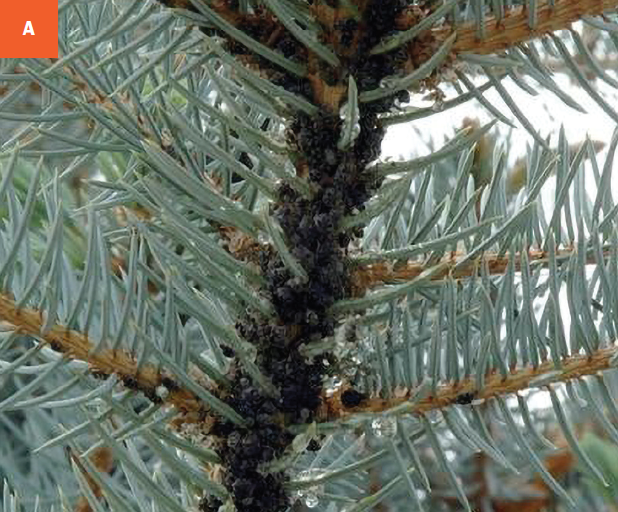Giant Conifer Aphids
Cinara spp.
HOST Conifers
DAMAGE/SYMPTOMS In large groups, the aphids can often blend in with the bark. Aphids feed on the sap from woody areas of the tree. Heavy infestations can cause needle drop, yellowing, curling of the needles, and dieback. The aphids also produce copious amounts of honeydew.
LIFE CYCLE Females lay eggs on needles in late summer. In the spring, eggs hatch and aphids reproduce asexually throughout the summer. Early season populations are on the terminal growth and upper areas of the tree.
MANAGEMENT Heavy aphid populations can be a sign of stress, and evergreens often suffer from environmental stress due to planting issues (planted too deep) or being underwatered. Aphid populations tend to be higher in plants or trees that are highly fertilized. Hose off aphids with a strong stream of water. Placing cardboard wraps with Tanglefoot around the tree can also help (see management discussion under “Aphids”). Aphids are controlled by natural enemies when populations are low. For chemical control, contact insecticides that are labeled for the host can be used in early to late spring.
A Giant conifer aphids clustering at base of needles. B Giant conifer aphids on juniper.


